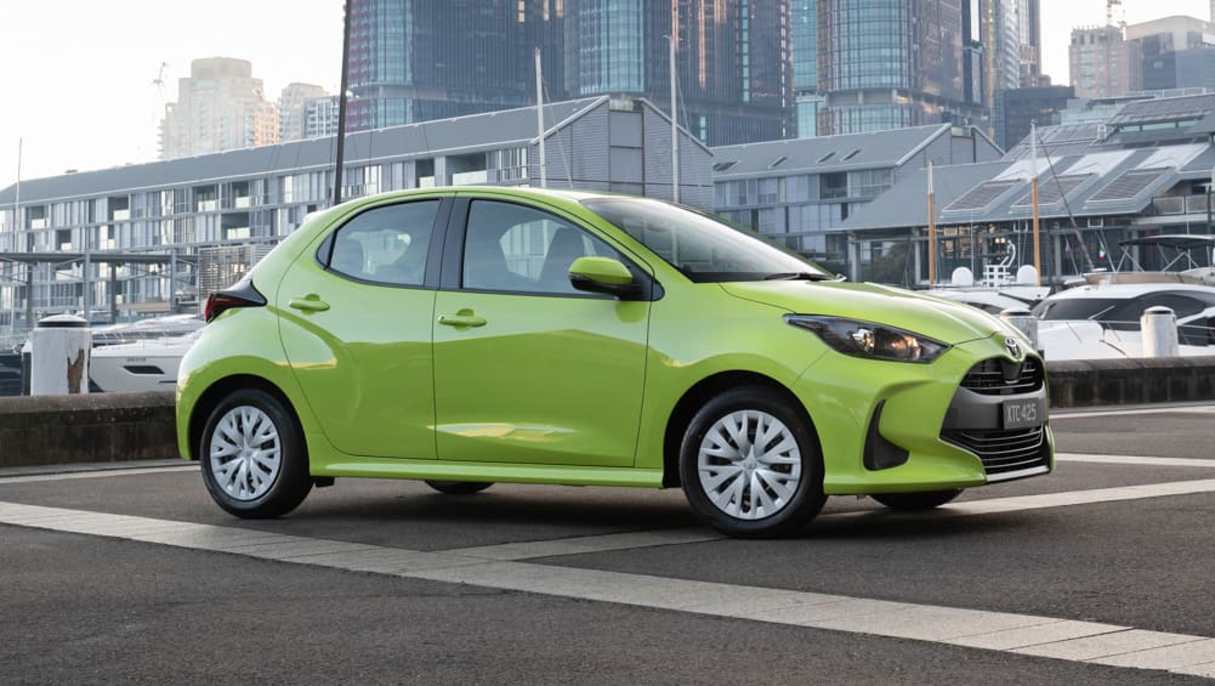It’s no secret times are tough. The cost of living is sky high and cars don’t seem to be getting any cheaper.
Equally, the cheapest small cars have never been as spacious, well-equipped and safe as they are today. So maybe downsizing isn’t so bad.
The new breed of Suzuki Swift, MG3 and Toyota Yaris have already proved that downsizing doesn’t have to be depressing. We’ve kept this three-way battle strictly to ‘hybrid’ entrants, meaning no Mazda 2, Kia Picanto or Suzuki Ignis.
We’ve pored over each car's spec sheets to put together a guide to these three superminis. Read on to find out which you should put on the short list.
Pricing and standard equipment
The MG3 hybrid starts at $27,990 and the Yaris Ascent Sport $28,500, both before on-road costs, giving the $24,490 Swift ‘hybrid’ a big on-paper advantage.
Add in the automatic CVT to match the Yaris and MG3 and the Swift’s $26,990 drive-away price is still at least 10 per cent better than rivals, so we’ve compared the Plus trim ($28,490, drive-away) against the others.
All these cars get a lot more kit than their nameplates did a decade ago, with the Swift even getting heated seats and the MG3 a huge 10.25-inch touchscreen. The equipment in the Yaris does tell the tale of an older car, but for a base model it is still well equipped.
The Swift and Yaris have 60/40 split fold rear backrests, while the also five-seat MG3’s back rest does not split, affecting practicality.
| Model | MG3 Excite Hybrid | Suzuki Swift Hybrid Plus | Toyota Yaris Ascent Sport hybrid |
| Price | $27,990 | $28,490 (drive-away) | $28,500 |
| Headlights | Halogen | LED | Halogen |
| Wheels | 16-inch alloy | 16-inch alloy | 15-inch steel |
| Screen size | 10.25-inch, Carplay, Android Auto | 9.0-inch, Android Auto, wireless Apple CarPlay | 8.0-inch, wireless Apple CarPlay and Android Auto |
| Digital cluster | 7.0-inch | No | No |
| Upholstery | Cloth | Premium fabric | Fabric |
| Seats | 6-way manual adjust | Heated, 6-way manual adjust | 6-way manual adjust |
| Steering wheel | Urethane, height adjust | Leather, height and reach adjust | Urethane, height and reach adjust |
| Sound system | 6 speakers | 6 speakers | 6 speakers |
| Navigation | No | Yes | No |
| DAB radio | No | Yes | Yes |
| Keyless Entry | No | Yes | No |
| Air-conditioning | Digital | Manual | Manual |
| Boot size | 293L | 256L | 270L |
Engines and fuel efficiency
The Suzuki, Toyota and MG approached each light car’s hybrid system very differently.
The Swift’s demure system is barely there and is really a mild hybrid configuration. In automatic guise, it drinks 4.0L/100km in the combined fuel efficiency cycle and emits 90 grams of CO2 per kilometre.
Thanks to a light kerb weight of 957kg, the Swift’s 61kW/112Nm outputs make for a decent power to weight ratio of 64kW/tonne.
The heavier Toyota Yaris gets more pep out of its electric motor, bringing total outputs to 85kW and 141Nm. A bigger battery and being capable of driving on electric-only power to around 40km/h means a fantastically low 3.3L/100km and 76g/km figure.
At the complete opposite end of the spectrum is the MG3, which is the king of punch. With 155kW and 425Nm the MG3 should be as fast as a hot hatch, but it isn’t. A claimed 0-100km/h sprint of 8.0 seconds still puts it a long way ahead of the others.
Unlike Toyota, MG’s peak outputs arrive under oddly specific circumstances, so while its punchy E-motor keeps it the most rapid of this bunch the difference isn’t as stark as on paper. A 1298kg kerb weight dulls responses, and fuel efficiency (4.3L/100km) in official tests.
| Model | MG3 Excite Hybrid | Suzuki Swift Hybrid Plus | Toyota Yaris Ascent Sport hybrid |
| Engine | 1.5L, 4-cylinder with electric motor | 1.2L, 3-cylinder, 12V mild-hybrid | 1.5L, 3-cylinder, Toyota hybrid system |
| Transmission | 3spd 'hybrid' transmission | CVT | e-CVT |
| Maximum power | 155kW @ 6000rpm | 61kW @ 5700rpm | 85kW |
| Maximum torque | 425Nm | 112Nm @ 4500rpm | 141Nm |
| 0-100km/h | 8.0 seconds (claimed) | 12.5 seconds (est.) | 10.5 seconds (est.) |
| Combined efficiency | 4.3L/100km | 4.0L/100km | 3.3L/100km |
| CO2 (g/km) | 100g | 90g | 76g |
| Minimum fuel | 95 RON | 95 RON | 91 RON |
Safety
The Toyota Yaris is the only vehicle with a five-star ANCAP safety rating, the MG3 scored three stars and the Swift was slammed with a one-star ANCAP safety rating in December.
As always, though, the devil is in the detail, as the Yaris was rated against easier 2020 criteria.

The MG3, Swift and Yaris all feature autonomous emergency braking, blind-spot monitoring, lane keep assist, rear cross-traffic alert, adaptive cruise control, lane departure warning and rear parking sensors.
The MG3 and Swift’s AEB systems are more advanced, featuring junction assist. Both are fitted with speed sign recognition, too.

In terms of old-school crash worthiness, the MG3 and Swift both have six airbags yet the Swift's adult occupant crash protection score was very low. The older Yaris is the only one to move the game on, with eight including a centre airbag. Impressive.
Ownership and servicing
The MG3 has the longest warranty at 10 years and 250,000km. The Suzuki Swift and Toyota Yaris are both backed with a five-year, unlimited kilometre warranty which may suit high-kilometre drivers better.
All three are due for maintenance every 12 months with the Swift and Yaris able to go a greater distance (15,000km) between services than the MG3 (10,000km).

Pricing is very close between the MG3 and the Swift with annual averages of $409 and $391, respectively. The Yaris is significantly cheaper to service at $245 per year.
Verdict
All three of these hybrid superminis are worth putting on your shortlist for a test drive, each being leaps and bounds ahead of their predecessors in safety, equipment and efficiency terms.
The Swift offers the greatest amount of equipment for the least but is the slowest on paper. The fastest, being the MG3 hybrid, isn’t as well equipped and drinks the most fuel in combined testing. And the most expensive is the Yaris, but its hybrid engine is well ahead in efficiency terms.
The only way to decide the best of these three to buy will be to have an extended test drive. In the meantime, you can read our comparisons and reviews on all three cars here on the Carsguide website.



































_0.jpg)



.jpg)

